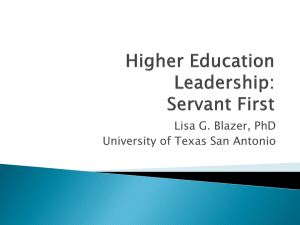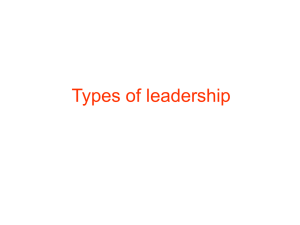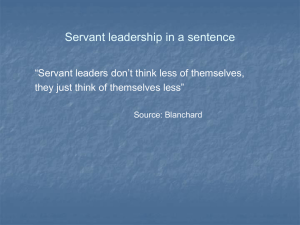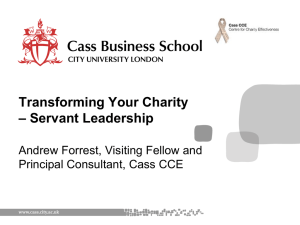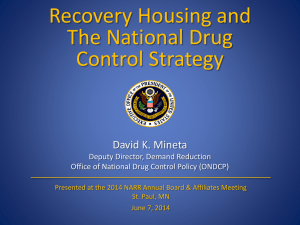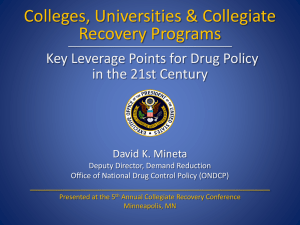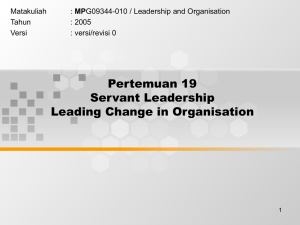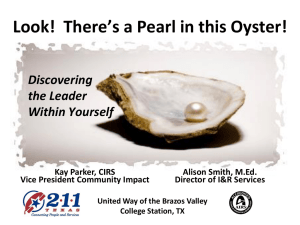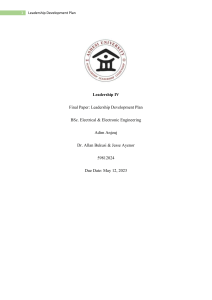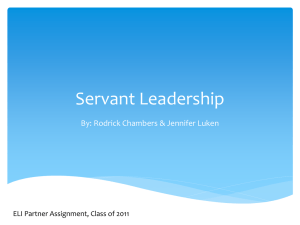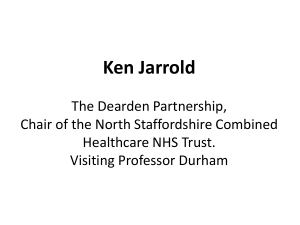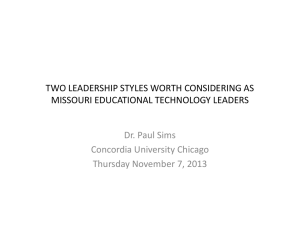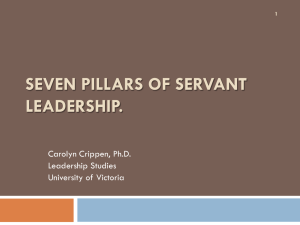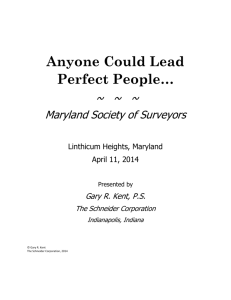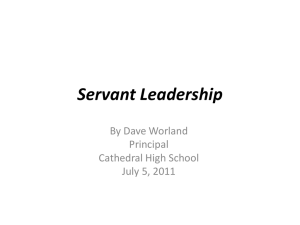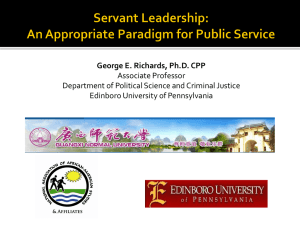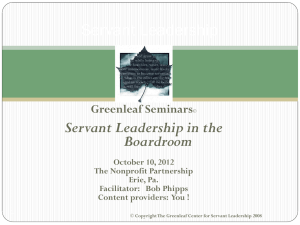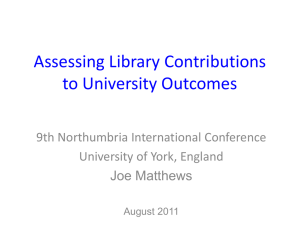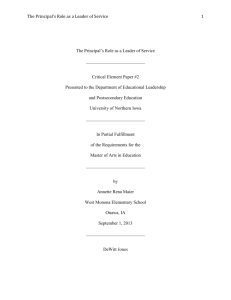The roads to recovery are many. – Bill Wilson – 1944
advertisement
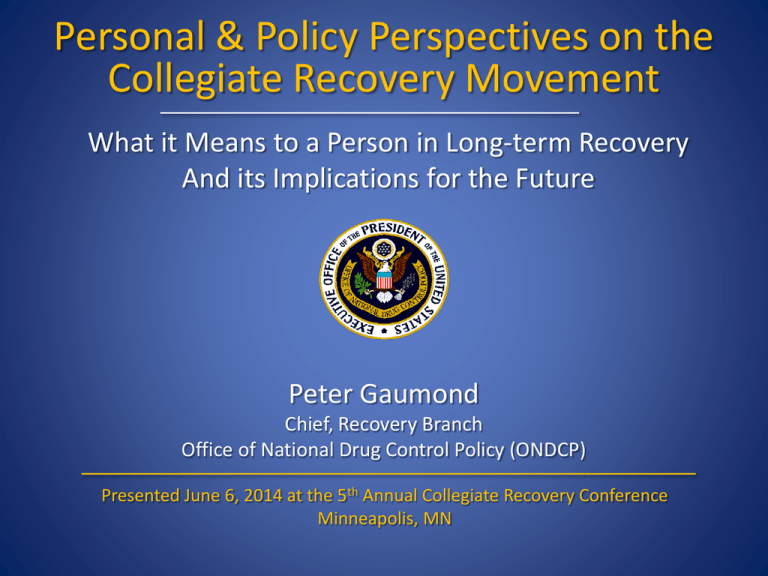
Personal & Policy Perspectives on the Collegiate Recovery Movement What it Means to a Person in Long-term Recovery And its Implications for the Future Peter Gaumond Chief, Recovery Branch Office of National Drug Control Policy (ONDCP) Presented June 6, 2014 at the 5th Annual Collegiate Recovery Conference Minneapolis, MN Personal Perspective: Some Background • A person in long-term recovery with 20+ years in treatment and recovery field • Experience of stigma and shame – Connecting head and heart – Recovery & personal identity • Recovery as a communal process – Contagious – Transformative at the individual, family, and community levels An Emerging Culture of Recovery The roads to recovery are many. – Bill Wilson – 1944 • Diverse new communities of recovery • Emergence of overarching recovery community that: – Transcends pathways – Views all successful recovery pathways as a cause for celebration1, 2 • Online and international communities • Greater openness, less stigma around addiction and recovery 1. White, W. (2008) The culture of recovery in America: Recent developments and their significance. Counselor, 9(4), 44-51. & Kurtz, E. (2006). Linking addiction treatment and communities of recovery: A primer for addiction counselors and recovery coaches. Pittsburgh, PA: IRETA/NeATTC. 2. White, W., Policy Landscape - Prevalence Young Adult Past Month Drug & Alcohol Use & Binge Drinking Percent SUD by Age Group - 2012 18.9% 20.0% 18.0% 69.2% 16.0% 70% 45.8% 50% 40% 30% 14.0% 45.1% 60% 12.0% 30.5% 19.7% 23.9% 10.0% 8.0% 7.0% 6.1% 20% 21-25 18-20 10% 0% Drugs Alcohol 6.0% 4.0% Binge 2.0% 0.0% 18-20 21-25 12-17 18-25 Data Source: SAMHSA (2013). Results from 2012 NSDUH, detailed tables. 26 + Lifetime Use – 4th Year of College* *As reported by one institution Policy Landscape - Impact • Excessive drinking & drug use: • 2006 - excessive drinking in the United States resulted in $223 billion in lost productivity, health care, and criminal justice costs.1 • 2007 - Illicit drug use cost the Nation an estimated $193 billion related to health care, crime, and lost productivity.2 • 2010 - An average of about 100 Americans died from overdose every day. Drug poisoning deaths, driven by prescription painkillers, now surpass homicides and traffic crashes as the leading cause of injury death in America.3 1. Bouchery et al (2011) Economic costs of excessive alcohol consumption in the U.S., 2006. Am J Prev Med 41 (5): 516-524 2. United States Department of Justice, National Drug Intelligence Center. (2011) The Economic Impact of Illicit Drug Use on American Society. Washington, DC. 3. Centers for Disease Control and Prevention, National Center for Health Statistics. Underlying Cause of Death 2000-2010 on CDC WONDER Online Database. Extracted December 12, 2012. Policy Prescriptions for the 21st Century • Comprehensive health & wellness approach – Education – Universal screening intervention & linkage to services – Collegiate recovery communities – Widespread drug- and alcohol-free social and recreational activities • Service on campus and beyond: – High schools – Larger community Student Leadership • “The servant leader is servant first.” • Greenleaf: – “Do those served grow as persons? – Do they, while being served, become healthier, wiser, freer, more autonomous, more likely themselves to become servants? What can you do? – …Focuses primarily on the growth and well-being of people and the communities to which they belong.” – Organization can be servant leader, too. Robert K. Greenleaf Center for Servant Leadership: https://greenleaf.org/what-is-servant-leadership/ What is Your Vision? How do we get there? Q & A / Discussion Peter Gaumond Chief, Recovery Branch Office of National Drug Control Policy ggaumond@ondcp.eop.gov WhiteHouse.gov/ONDCP


